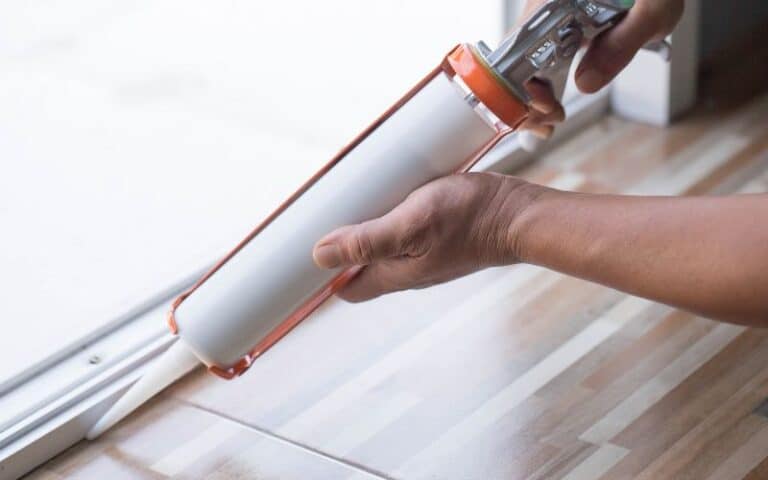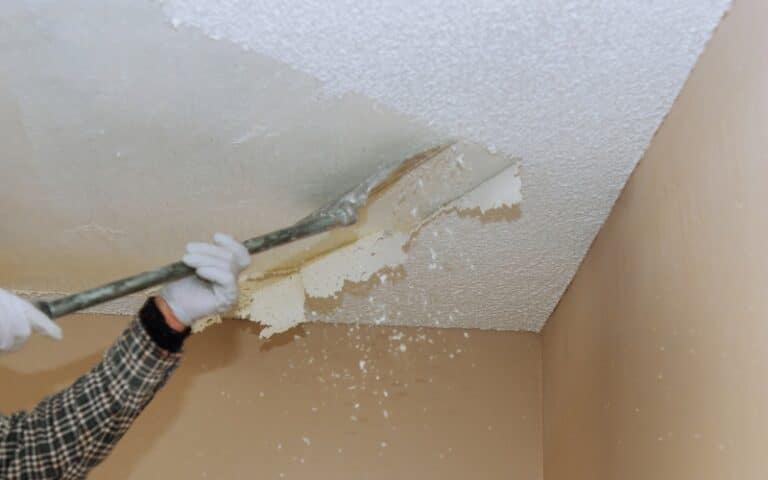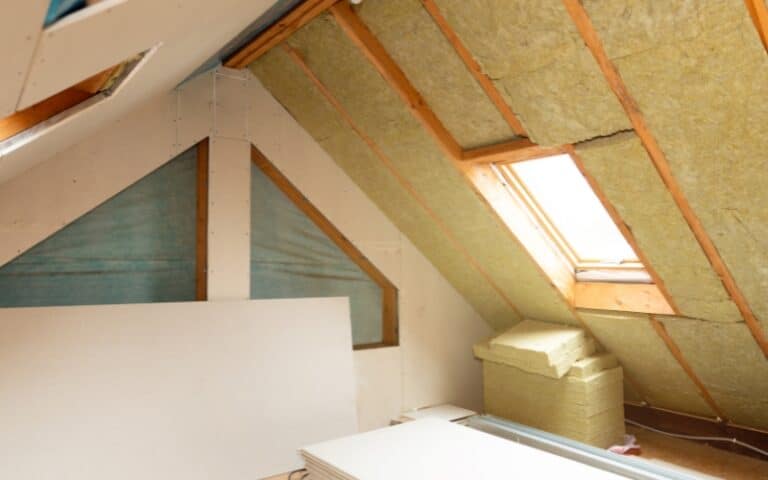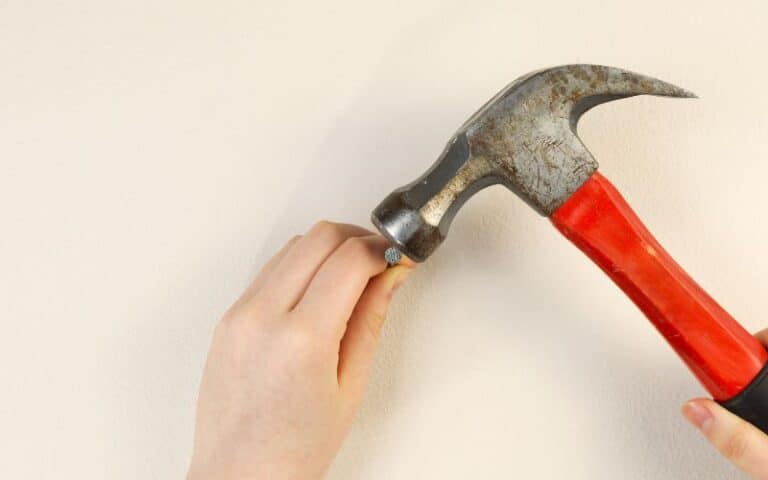Drywalls are sheets of gypsum that you can use to finish up surfaces in your home or buildings.
To hold the drywall in place, you can either use nails or screws. If you use nails, driving the nails in will require a tool like a hammer.
If you don’t want to use a hammer to drive in the nails, an alternative is a nail gun. You may want to know if you can use a nail gun on drywall.
Yes, you can use a nail gun on drywall. Nail guns are better because using hammers to drive in nails requires a lot of effort, and you might risk getting injured. If you want a nail gun on your drywall, the best one is a framing nail gun.
In this article, I’ll tell you about the benefits of using a nail gun for your drywall and the comparison between nails and screws.
You’ll also learn about the advantages and disadvantages of using screws or nails on your drywall.
Ready for a Drywall Quiz?
Do You Need a Nail Gun for Drywall?
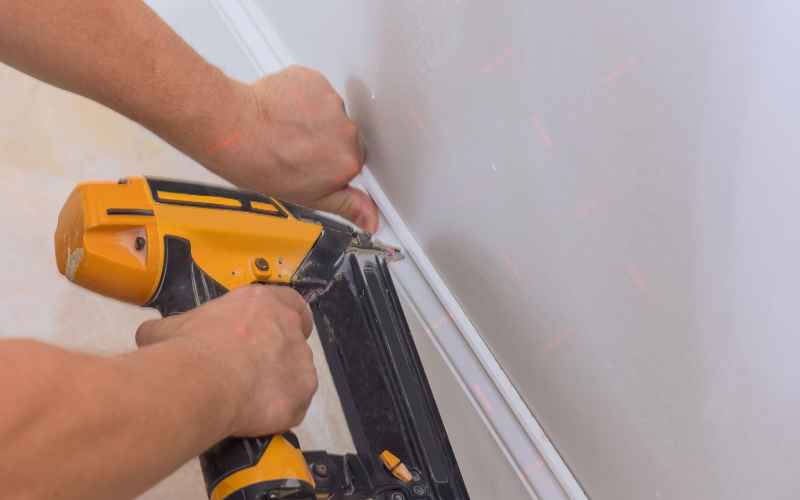
Yes, you need a nail gun if you are using nails on your drywall. Using nails is an option to install drywall on a surface.
Nails are affordable, easy to drive into the wall, have great strength, and are less likely to get twisted or broken.
If you use nails for your drywall, you’ll need a tool to drive them into the wall. You can choose to use a hammer, which is affordable and easy to handle, or a nail gun.
A nail gun is better for driving nails into your drywall than hammers.
Here are some benefits of using nail guns to drive nails into your drywall:
- Nail guns produce much more effectively than hammers with less effort.
- Nail guns make it faster to drive nails into surfaces.
- Nail guns reduce the chances of you getting injured compared to hammers.
- Nail guns provide you with accurate results.
If you want a nail gun for your drywall, use a framing nail gun or a collated nail gun. Framing nail guns and collated nail guns have the required feature for drywall use.
What Kind of Nail Gun Should You Use on Drywall?
The best nail guns to use on drywall are framing nail guns and collated nail guns.
You can use a framing nail gun for heavy-duty work, like building up frames by joining large pieces of lumber together.
The framing nail gun can drive nails up to 3.5 inches long, and carpenters use it with 2 x 4s or 2 x 6s for various operations.
Here are some characteristics of a typical framing nail gun:
- The body of a framing nail gun is either made of aluminum or magnesium.
- Framing nail guns have a selective fire setting.
- Framing nail guns have a good depth of drive adjustment.
If you purchase a framing nail gun for your drywall, here is how to use it:
- Align the nail tip and the cylinder to where you want to fire the nail.
- Press the nail gun against the surface to depress the tip of the nail gun.
- The nail gun will fire a single nail into the surface, usually about ⅛ inch in depth. You can change the depth adjustment setting of your framing nail gun.
Is It Better to Screw or Nail Drywalls?
Screwing or nailing drywalls both have their advantages based on certain aspects.
Depending on some features, you might consider drywall screws better than drywall nails or vice versa. It all depends on the features you are searching for.
#1. Drywalls Nails
Here are the advantages of using nails:
- Nails are affordable
- Nails have a great shear strength
- Nails hardly get twisted or broken
Here are the disadvantages of using nails:
- Nails easily pop out from the walls
- Nails cannot handle cold temperatures
- You’d have to buy a lot of nails if you want to use them on your drywall
#2. Drywall Screws
Here are the advantages of using screws:
- Screws have a high grip strength
- Screws are faster to drive into drywalls
- Screws do not pop out often
Here are the disadvantages of using screws:
- Screws get broken and twisted often
- Screws take a long to drive into drywalls
- Screws are not cost-effective
Here are some comparisons of drywall nails and drywall screws based on four different categories:
#3. Overall Cost
Drywall nails are more cost-effective than drywall screws. You’d save about $2 per pound if you purchase drywall nails.
However, you’ll need more nails per sheet of drywall than screws, so it somewhat cancels out.
You also need to consider the cost of tools you’ll use to drive the nails and screws in the drywalls. Again, you’d save a lot if you chose drywall nails over drywall screws.
The tool you’d use to drive nails in a drywall is a hammer, while the tool you’ll use to dry the screws is an electric screw gun or an electric screwdriver.
It costs an average of $36 to purchase an electric screw gun and about $10 to purchase a hammer, which is quite the difference.
#4. Speed
Once you’ve gotten the hang of using electric screwdrivers, you’d agree that it is faster to drive screws into drywall than to drive in nails with a hammer.
If you don’t know how to use an electric screwdriver, here are steps on how to do it:
#5. Brushless Electric Screwdriver
- Join the power cable to the transformer and the screwdriver.
- Attach the power cord to the power outlet and behind the transformer.
- Use the switch to the transformer to turn it on and check the power indicator to confirm.
- Choose your desired bit and retract the collar.
- Release the retracted bit collar when you insert the bit.
- Make sure that your chosen bit fits the head of the fastener properly.
- Turn the torque adjustment nut to set the torque limit.
- To increase torque, turn the adjustment nut clockwise and turn it counterclockwise to decrease the torque.
- Use a torque-testing system to confirm the torque setting.
- Turn the driver on to check for the proper rotation.
- To apply the torque, squeeze the lever. If you use a push-to-start model, exert downward pressure on the driver’s nose.
- The screwdriver will immediately stop when it reaches the preset torque.
- When removing the screw, change the switch to reverse.
#6. Standard Electric Screwdriver
- Join the power cable to the transformer and screwdriver
- Tighten the ground ring
- Attach the power cord to the power outlet and behind the transformer
- Use the switch on the transformer to turn it on
- Choose your desired bit and retract the bit collar
- Release the retracted collar bit when you insert the bit
- Make sure that your bit fits the head of the fastener properly
- Turn the torque adjustment nut to set the torque limit
- To increase torque, turn the adjustment nut clockwise and turn it counterclockwise to decrease the torque.
- Switch the driver and make sure that the driver rotates properly
- Gently squeeze the lever to apply the torque
- If you use a push-to-start model, exert downward pressure on the driver’s nose.
- The screwdriver will immediately stop when it reaches the preset torque.
- When removing the screw, flip the switch to reverse.
#7. Strength
The grip strength of screws is much larger than the grip strength of nails on drywall. The absence of strength is because nails are more flexible than screws.
#8. Pop-Outs
Nails are most likely to experience pop-outs than screws because screws have greater grip strength.
Just as long as you use screws with the correct length and number of screws per sheet, then there would be less movement of the screws in the drywall.
Below is a table comparing Screws to drywall nails.
| Categories | Drywall Nails | Drywall Screws |
|---|---|---|
| Cost | More cost-effective | Less cost-effective |
| Speed | Slower to drive into drywalls | Faster to drive into drywalls |
| Strength | Lower grip strength | Higher grip strength |
| Pop-outs | More pop-outs | Less pop-outs |


